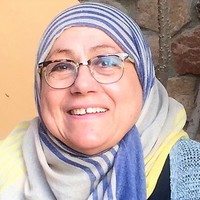Papers by Bernhard Pracejus
Applied Geochemistry, Aug 1, 2023
日本地質学会学術大会講演要旨, Sep 30, 1997
Social Science Research Network, 2022
EGU General Assembly Conference Abstracts, Apr 1, 2018
Blackwell Publishing Ltd eBooks, Apr 3, 2009

Bulletin of Environmental Contamination and Toxicology, Jul 16, 2020
The changing climatic conditions are imposing a vital reconsideration on the hydro-chemical pathw... more The changing climatic conditions are imposing a vital reconsideration on the hydro-chemical pathways for contaminants. The circumference Mediterranean countries will be possibly under imminent water stress. The present study attempts to identify the sources and the leaching capacity of Cr(VI) in a coastal alluvial fan and aeolian soil and in a serpentine soil in an area offering an aridity analogue, like Oman. Magnetic separation and different leaching media were applied along with Cr(VI) sorption experiments in daylight (open air) and in laboratory conditions (without direct sunlight). In most of the samples the released Cr(VI) concentration was higher that the drinking water standard (50 μg L −1). Magnetic soil fraction has the highest bulk Cr concentration, however, the leaching of Cr with phosphate extraction solution was high in the no-magnetic fraction. Immobilization of Cr(VI) was higher in the sunlight conditions for the serpentine soil and not for the alluvial/aeolian soils.
Journal of Analytical and Applied Pyrolysis, Nov 1, 2022

Economic geology and the bulletin of the Society of Economic Geologists, Aug 1, 2023
Despite the substantial amount of research on the Cretaceous Samail ophiolite in Oman, the factor... more Despite the substantial amount of research on the Cretaceous Samail ophiolite in Oman, the factors controlling the size and metal endowment of the mafic-hosted, Cu-Au(-Zn-Ag) volcanogenic massive sulfide (VMS) deposits remain elusive. This work shows that the volcanostratigraphic position, hydrothermal venting style, and oxidation processes are critical factors controlling the distinct features of the Shinas and Mandoos deposits. Mandoos is a large (8 Mt, 1.8 wt % Cu, 0.18 g/ton Au) orebody preserving abundant primary vent-related features formed via mound growth and collapse within a wide hydrothermal field, overlying a poorly developed stockwork. The smaller Shinas deposit (0.8 Mt, 2.6 wt % Cu, 0.63 g/t Au) represents a higher-temperature system evolving from low ƒS 2 /ƒO 2 conditions, locally sealed by jaspers, to a mound growth stage with widespread subseafloor brecciation/replacement with associated zone refining. Mandoos formed at the onset of the postaxial stage (Geotimes-Tholeiitic Alley transition), and Shinas is hosted within the Alley units. Volcanism in Samail was seemingly continuous, and the low eNd and Nb/Ta of the Shinas hanging-wall lavas record the onset of significant modifications of the mantle source during the postaxial stage. Mandoos is enriched in Te + As + Se ± Zn ± Ga ± Sb relative to Shinas, where higher Cu + Au + Tl ± Mo grades possibly reflect leaching of protoarc-like lavas. Rare earth element patterns in the ores mimicking the deposit footwall can be employed to constrain volcanostratigraphic positioning and indicate that the footwall lavas may also represent a source of metals. Formation of metal-rich ochres at the sea floor likely led to Cu + Au upgrading in the ores during seawater-induced oxidation, which was enhanced during subaerial gossan formation.

<p>The Tethys-derived Semail Ophiolite had formed during the Cenomanien-Tur... more <p>The Tethys-derived Semail Ophiolite had formed during the Cenomanien-Turonian. Along with deep-sea sediments, it was obducted onto the Arabian Plate as it was still young, hot and buoyant. Thrusting and loading triggered the formation of the Aruma Foreland system consisting of a foredeep, a forebulge and a backbulge basin.</p><p>The studied succession represents the uppermost part of the Permo-Mesozoic shallow marine shelf sequence of the Arabian Platform, which is blanketed at an angular unconformity by shales of the Late Cretaceous Muti Formation of the Aruma (foreland) Group. The structural position of the succession is on the forebulge which is characterized by eroded Cretaceous and Jurassic shelf formations of the Arabian Platform (Wasia-Aruma Break).    </p><p>We identified two forebulge successions. Both display repetitive lithofacies, beginning with (1) shallow subtidal massive/poorly bedded bioclastic wackestones to floatstones, followed by (2) peloidal grainstones, (3) ferruginous crusts and (4) shallow marine ferruginous oolites. From base to top, both successions record an overall shallowing-up trend. At the same time, the relative sedimentation rate decreases in the same direction. The coarse-grained massive facies may have been deposited on a regular slope which was well-supplied with bioclasts. The finer grained grainstone facies and their peloids indicate a lower sedimentation rate, reflecting the transition form a regular slope to a forebulge on which in the next step sediment condensation occurred (crusts) and chemical precipitation of ferruginous material (crusts and oolites). Each forebulge succession is capped by clayey material.</p><p>The similar facies development of the two successions suggests repetitively similar depositional and tectonic conditions. As both sequences occur at the same site, two vertical forebulge developments are concluded.</p><p>The ferruginous crusts formed under at least slightly reducing conditions, associated with minor water-deepening events. Both oolites contain chlorite, hematite, quartz, calcite and apatite. The nuclei of the ooids are often chlorite or hematite fragments, having most-likely derived from preexisting ferruginous crusts. Iron oxyhydroxides and clinochlore of the oolites reflect bathymetric changes to more oxidizing aqueous conditions, associated minor water-shallowing events.</p><p>Fe-rich anoxic to sub-oxic sea water of the marine foredeep was the Fe source for the crusts and oolites, coinciding with (1) a high rate of global Cretaceous oceanic crust production, (2) related hydrothermalism and (3) the regional proximity of an active spreading axis. Fe was likely stabilized in ocean water as Fe colloids and organic Fe complexes.</p>
EGU General Assembly Conference Abstracts, Apr 1, 2017

Global NEST International Conference on Environmental Science & Technology
The present study attempts to identify the sources of Cr(VI) in a coastal alluvial fan soil and s... more The present study attempts to identify the sources of Cr(VI) in a coastal alluvial fan soil and soil from a chromite mine. In addition investigates the effect of photochemically oxidized organic matter in the Cr(VI) mobilization in soil. The alluvial bulk soil samples contain several evidence of weathered products of the ophiolite nappe like serpentine and amphiboles. For better characterization we separated different soil fractions with magnetic separation. The results showed that magnetic fraction exhibits high amount of serpentine. The XRF-analysis showed Mg and Cr to be enriched on average by 2.5 and 6 times, respectively. The produced fractions were mixed with glucose to simulate organic carbon and then leached with KH2PO4/Na2HPO4 for the exchangeable Cr in all fractions before and after the exposure of the samples in the sun for several days. The results showed that soils from chromite mine were influenced by oxidation of organic matter with 20-30% reduction in Cr(VI) release,...
Marine and Petroleum Geology

Geological Society, London, Memoirs
Abstract This chapter provides the conclusions/outlines of the tectonics, affecting the Southeast... more Abstract This chapter provides the conclusions/outlines of the tectonics, affecting the Southeastern Oman Mountains, including the Jabal Akhdar and Saih Hatat domes. The main tectonic events include amongst others (1) Neoproterozoic rifting, (2) two distinct early Paleozoic compressive events, (3) large-scale open ‘Hercynian’ folding and formation of a pronounced unconformity during the late Paleozoic, (4) rifting preceding the opening of the Neo-Tethys Ocean during the late Paleozoic, (5) late Cretaceous obduction of the Semail Ophiolite and the response of the Arabian lithosphere as well as (6) post-obductional tectonics. Also of major geological significance are the three major glaciations (Sturtian, Marinoan and Late Paleozoic Gondwana glaciation) which have been recorded in the rocks of northern Oman. Moreover, major lithological, structural and metamorphic differences exist between the Jabal Akhdar and Saih Hatat domes. It appears likely that a major fault, striking parallel to the eastern margin of the Jabal Akhdar Dome, probably originating during Neoproterozoic terrain accretion, acted as a divide between both domes until present. This fault was multiple times reactivated and could explain the differences between the two domes. A catalogue of unanswered questions is included in chronological order to express that many geological aspects need further investigation and future research projects.
EGU General Assembly Conference Abstracts, Apr 1, 2016

<p>The rocks of the Saih Hatat Dome (SHD) formed during and after two major... more <p>The rocks of the Saih Hatat Dome (SHD) formed during and after two major geological events shaping Arabia: 1) Subduction of continental rocks in the course of the Late Cretaceous Semail Ophiolite obduction onto the Arabian Plate and 2) Exhumation of >16 km and high deformation/folding in the northeastern part of the SHD. The latter resulted in a ~20 km wide recumbent fold (Saih Hatat Fold Nappe). The sub-horizontal fold axis of this fold trends NNE in the northern SHD. The core of the SHD and the recumbent fold consist of dark Neoproterozoic meta-shales and meta-sandstones, while its margin (and upper/lower limbs of the recumbent fold) consist of Permian cliff-forming carbonates.</p><p>Within the northern SHD, numerous milky quartz veins occur. We structurally and mineralogical analyzed >500 of these veins, covering an area of ~200 km<sup>2</sup>. The veins vary in width from one centimeter to a few meters, while the length ranges between several decimeters to several decameters. Associated with the predominant milky quartz, are calcite, siderite, chlorite, albite, anorthite, actinolite, rutile, hematite, goethite, and pyrrhotite. Rare molybdenite aggregates seem to replace carbonate, in which it occurs exclusively. Quartz microstructures include bulging (BLG) recrystallization, sub-grain rotation (SGR) recrystallization, and undulose extinction. Sub-grains and triple junctions in quartz are common. The mineralogy and quartz microstructures indicate maximum peak temperature conditions of ~400-500°C.</p><p>At least two sets of veins can be distinguished. Both vein sets occur mostly in clusters and partly form vein swarms. The mineralogy and quartz microstructure of both vein sets is similar. The older set 1 has been folded by the Saih Hatat Fold Nappe. Thus, vein formation predates 76-70 Ma. Furthermore, veins of set 1 are often sub-parallelly oriented to the main foliation of the host rocks, and they may be boudinaged. They may form complicated vein structures. We assume that this vein set initially formed during the Permian Pangean/Tethys rifting. The second vein set is abundant, sub-vertically and strikes consistently E/W to ESE/WNW. These veins cut the overall moderately NW-dipping bedding surfaces of the ambient rocks. Set 2 veins either formed during exhumation of the dome (Late Cretaceous to early Eocene and late Eocene to Oligocene) or they are part of the NW-striking sinistral Hajar Shear Zone, which affected the entire eastern Oman Mountains during the Oligocene to early Miocene. Ongoing U-Pb dating of carbonates and further field survey will further contribute to the understanding of their age and tectonic setting.</p>










Uploads
Papers by Bernhard Pracejus